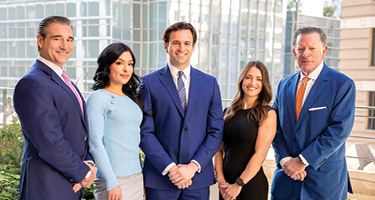Mergers and acquisitions are inevitable in all business areas, and that certainly extends to the legal profession.
In October 2023, Fairfax Associates, which tracks professional services activities, noted 11 mergers with an effective date occurring in the third quarter of 2023, bringing the total completed for the first three quarters of the year to 41. Fairfax also reported in July that more law firm mergers were completed in the first half of 2023 than in the same period in 2022 and 2021.
But a look beyond just the numbers shows that many of these firms enter into negotiations with a considerable focus on cultural alignment, employee retention and, ultimately, adapting to a changing marketplace. Law firm leaders who oversaw mergers in the past year discussed what inspired their own activity, how an expanding enterprise coincided with their strategic plans and how the frequency of mergers might be indicative of future trends.
Internal and External Drivers
Alabama-based Maynard Cooper & Gale and Carolinas-based Nexsen Pruet officially merged in April 2023 to form Maynard Nexsen, which is now a national firm with more than 550 lawyers. CEO & Managing Shareholder Jeffrey M. Grantham said that a wave of mergers is a normal part of the industry’s cycle and is driven by the need to meet clients’ expectations.
“Consolidation is the evolution of industries across the spectrum; the legal services industry is no different,” said Grantham, who has been recognized by The Best Lawyers in America® in Alabama in Insurance Law since 2007 and Commercial Litigation since 2013. “You will continue to see it as clients prefer to focus on fewer service providers and law firms seek to expand their service to their clients across markets and expertise and capabilities.”
Strengthening and expanding Holland & Knight’s (H&K) healthcare practice was a key motivation behind its acquisition of Waller Lansden Dortch & Davis in March 2023. This combination brought H&K’s headcount to 2,000 attorneys worldwide.
“For more than 50 years, service to the healthcare industry was a very significant pillar of Waller’s legal practice,” said H&K Managing Partner Steven Sonberg, who has been recognized by Best Lawyers since 2001 for Corporate Law in Miami, Florida. “With the combination, however, the firm added several healthcare practices Waller did not have previously, including FDA regulatory, federal lobbying, antitrust and data security. Likewise, Holland & Knight gained enormous depth in multiple key areas in healthcare, but especially in state healthcare regulatory experience, private equity, M&A and additional experience in healthcare services. We can counsel clients on healthcare matters ranging from business, regulatory compliance and real estate to litigation, government enforcement and public policy issues.”
While law firms’ expertise is complementary and strengthens its overall offerings, in other cases, an “employees are our greatest asset”-style philosophy can lead these moves. Taft Stettinius & Hollister Chairman and Managing Partner Robert J. Hicks pointed to his firm’s merger with Jaffe Raitt Heuer & Weiss as an instrument for career development and future recruitment efforts.
“We want to continue developing a broader and deeper toolbox for our clients as well as rewarding career opportunities for our attorneys and staff,” said Hicks, who has been recognized by Best Lawyers since 2007 and is currently recognized for 2024 in Business Organizations, Corporate Law and Mergers and Acquisitions Law in Indiana. Through the merger, in which Taft retained its name, the firm added 120 attorneys to its roster, boosting the firm to 800 lawyers at the start of 2023. “The stability of our larger platform has helped establish us as a ‘safer choice’ for the attorneys we recruit and our clients and prospective clients.”
Taft Detroit’s partner-in-charge Mark G. Cooper also made it a point to empower his new lawyers from Jaffe, many of whom are based in the Motor City, by giving them a voice on the direction of the firm.
“[Provide] a seat at the table,” said Cooper, who was named a Best Lawyers “Lawyer of the Year” for Insurance – Litigation in Detroit in 2021, 2018 and 2016. “Taft Detroit has four seats on the firm’s executive committee, providing representation of perspectives and ideas relative to our local market.”
Identity and Measuring Success
When a new milestone is reached, some might be bold enough to have their achievements woven into their identity. Branding is inexorably linked to every firm’s identity and strategy and is clearly a top priority amid a merger or notable change in leadership. Though this has traditionally led to the addition or removal of names, a new nomenclature has premiered.
The firm, formerly known as Gordon Rees Scully Mansukhani, rebranded itself in October 2023 as GRSM50 and touts itself as the first in the profession to use a numerical identifier in its name.
“The rebrand represents a clear reflection of the firm's forward-thinking and ambitious culture to innovate, do new things and act as entrepreneurially as possible,” said GRSM50’s Firmwide Managing Partner Dion Cominos. “We were the first law firm in all 50 states, and now we are the first with a number in our name.”
Whether this will be the start of a trend remains to be seen; a similarly distinctive milestone may need to be achieved in order to effectively tell the firm’s story.
“Just as we are now seeing other firms looking to expand into all 50 states, we expect that some may also attempt to brand themselves in unique and novel ways as well,” Cominos said. “The law business is not particularly innovative by nature; it's more of a herd mentality where no one ever wants to be first or last. But now that we have broken down these barriers, others are likely to follow.”
Every firm will measure the success of a merger differently. A partial list of metrics will likely be comprised of time, revenues, headcount, cultural alignment, courtroom results and client satisfaction.
“We now have combined capabilities, some of what we each lacked separately, that have allowed us to serve our legacy clients in ways that we each would not have been capable of previously,” Grantham said. “We are actually tracking this and are amazed at how significant it is just in these early stages. We are repeatedly hearing from clients who are not just supportive, but enthusiastic, about the merger and bringing opportunities to us that were going elsewhere previously.”
Exploring Options in 2024 and Beyond
Fairfax warned in July that despite the high interest in mergers, “as more firms explore larger and more complicated combinations, the typical timeframe for completing a combination is lengthening, and the likelihood of hitting a roadblock in these types of combinations is greater.”
With that in mind, and considering that 2023 has proven to be a landmark year in the way of mergers, firms considering their next move might look to the past 12 months for inspiration to at least pursue some opportunities.
“Law firms are beginning to see that scale gives considerable advantages, especially if it’s done in a focused way that builds on existing strengths,” Sonberg said. “Simply put, scale allows a firm to provide the talent, technology and other resources necessary for its professionals to be competitive in today’s legal market. This consolidation matches what we see in many industries. There is a significant value proposition for clients to hire a firm that knows them well and can handle almost any emergent need.”














